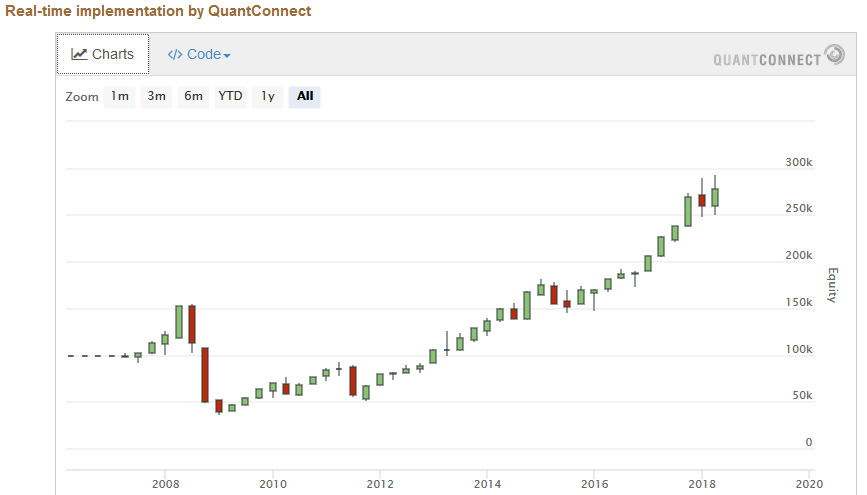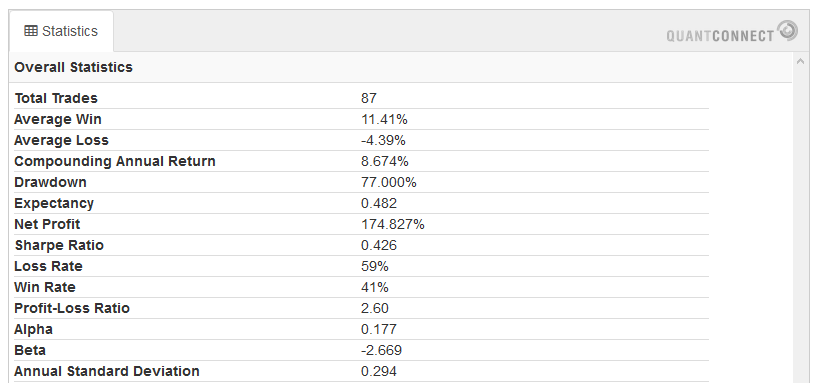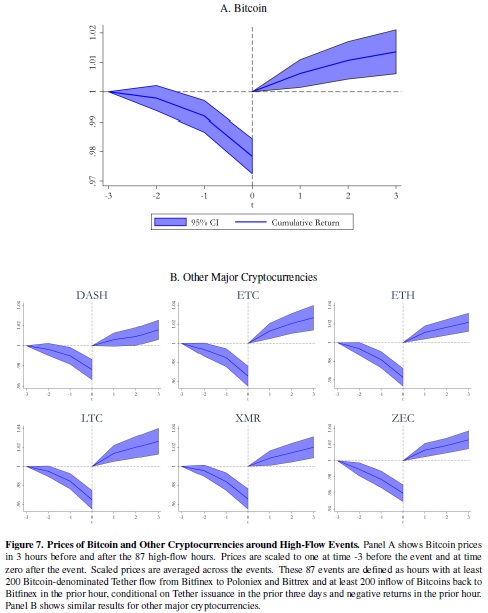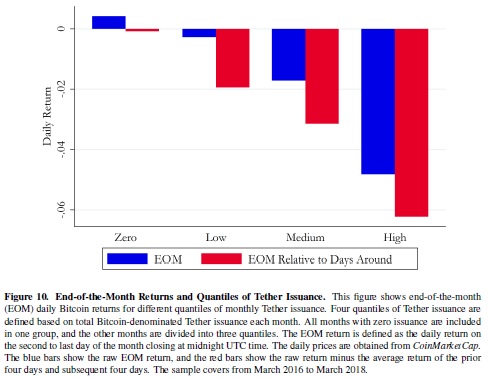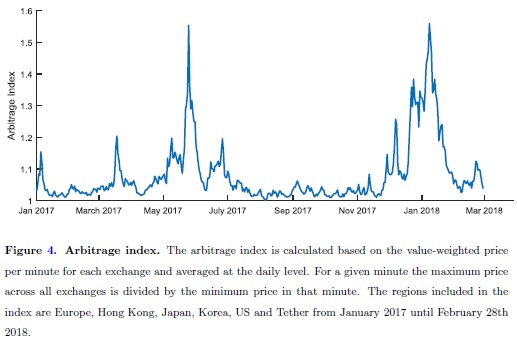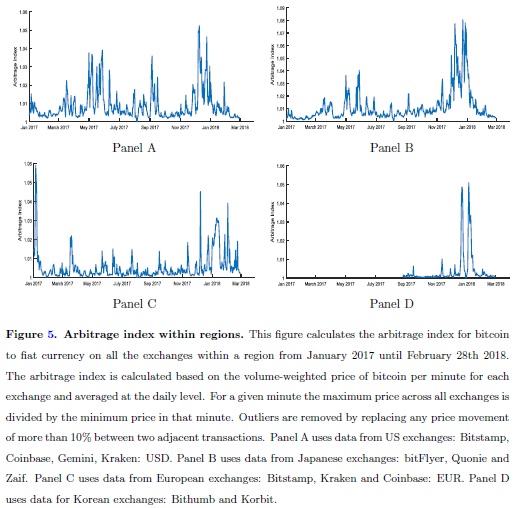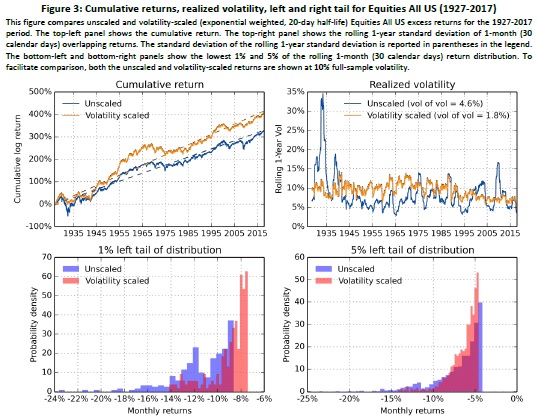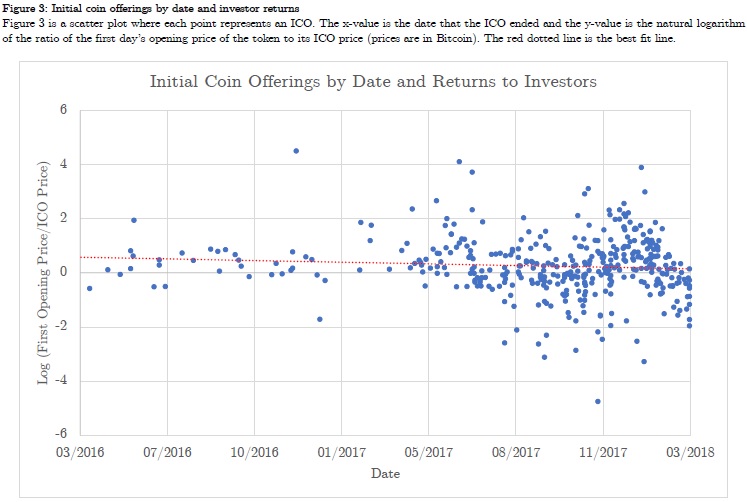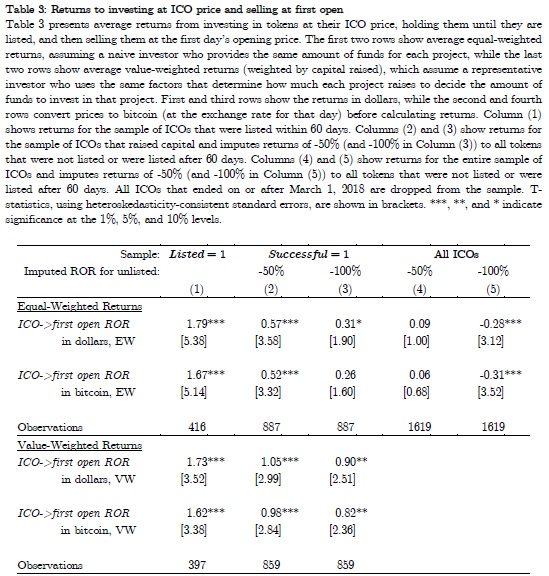Predictability of Betting-Against-Beta Factor
A new financial research paper has been published and is related to:
#77 – Beta Factor in Stocks
#78 – Beta Factor in Country Equity Indexes
Author: Hedegaard
Title: Time-Varying Leverage Demand and Predictability of Betting-Against-Beta
Link: https://papers.ssrn.com/sol3/papers.cfm?abstract_id=3194626
Abstract:
The leverage aversion theory implies that returns to the betting-against-beta (BAB) strategy are predictable by past market returns: An outward shift in investors' aggregate demand function simultaneously increases market prices and increases the expected future BAB return. I confirm the prediction empirically and find that the BAB strategy performs better in times when and in countries where past market returns have been high. I construct timing-strategies that are long BAB half the time and short BAB half the time, based on past market returns, and show that these timing strategies have realized strong historical performance.
Notable quotations from the academic research paper:
"In the Capital Asset Pricing Model (CAPM) of Sharpe (1964) and Lintner (1965), the risk of an asset is measured by its market beta and the expected return on an asset is proportional to its beta such that the relation between beta and expected returns, the security market line (SML), has a slope equal to the equity risk premium and an intercept equal to the risk-free rate. Empirically, Black et al. (1972) fi nds that the SML is too flat, and Black (1972) and Frazzini and Pedersen (2014) (FP hereafter) suggest that the at SML is due to leverage constrained investors.
Instead of applying leverage, constrained investors obtain an expected return higher than the expected return on the market by over-weighting high-beta stocks and under-weighting low-beta stocks in their portfolios, thereby lowering future risk-adjusted returns on high-beta stocks and increasing future risk-adjusted returns on low-beta stocks. FP construct a betting-against-beta (BAB) portfolio that goes long low-beta assets, leveraged to a beta of one, and short high-beta assets, also leveraged to a beta of one. The leverage aversion theory in FP predicts that the SML should be too flat on average and that the BAB factor should have a positive average return, which FP also find empirically.
I show that according to the leverage aversion theory, a shift in investors' aggregate demand function moves the economy to a new equilibrium in which both prices and expected returns on the BAB factor have changed. The eff ect of an outward shift in investors' demand function on the expected BAB return is theoretically ambiguous, since there are two opposing e ffects:
First, holding expected returns constant, constrained investors become more constrained and increase the over-weight to high-beta stocks, such that the expected return on the BAB factor increases.
Second, since prices increase and expected returns decline for markets to clear, the improvement in utility of over-weighting high-beta stocks decline, such that investors become less constrained and the expected BAB return declines.
Thus, if investors become more constrained following an outward shift in their demand functions, the shift leads to an increase in the expected BAB return, but if investors become less constrained it leads to a decrease in the expected BAB return.
It seems natural that investors become more constrained following an outward shift in their demand functions, and I show that empirically high past market returns forecast high future BAB returns and that daily market returns are negatively correlated with contemporaneous BAB returns. I demonstrate this for both U.S. BAB returns and international BAB returns, as well as for BAB factors formed from country indices.
I show that past market returns predict future BAB returns using both regressions, sorts, and by constructing a trading strategy. First, regressing BAB returns on contemporaneous and lagged market returns shows that daily BAB returns have a strong negative correlation with daily market returns and that past market returns positively predict future BAB returns. Second, sorting BAB returns on past market returns shows that realized BAB returns are higher following high past market returns. I demonstrate this e ffect for both the United States as well as for a sample of 23 other countries. Third, I construct BAB-timing strategies that take a position in the BAB factor in a given country proportional to the past 12 month market return of that country. Across the 24 international countries, the BAB timing strategies have generated positive alpha to a two-factor model with the market and BAB in all but 2 countries, and the alpha is signi ficant in 12 of the 24 countries.
Further, the variation in expected BAB returns coming from past returns is not only a time series e ffect, it is also a cross sectional e ect. I show that past market returns help explain cross-country di fferences in future BAB returns. Sorting countries based on their past market return shows that future BAB returns are higher in countries for which the past market return was higher than the cross-country average market return, and future BAB returns are lower in countries for which the past market return was below the cross-country average.
I also test the predictability of BAB using country indices. Here, the BAB strategy goes long country indices with a low beta to a global index and short indices with a high beta to a global index. FP show that the BAB strategy generates positive excess returns in a region of 13 developed countries, and extending their results I show that the BAB strategy also generates positive returns in a region of 25 emerging countries. Further, I show that in each region the returns on the BAB strategy are predictable by past returns on a cap-weighted index of the countries in the region."
Are you looking for more strategies to read about? Check http://quantpedia.com/Screener
Do you want to see performance of trading systems we described? Check http://quantpedia.com/Chart/Performance
Do you want to know more about us? Check http://quantpedia.com/Home/About
Follow us on:
Facebook: https://www.facebook.com/quantpedia/
Twitter: https://twitter.com/quantpedia


